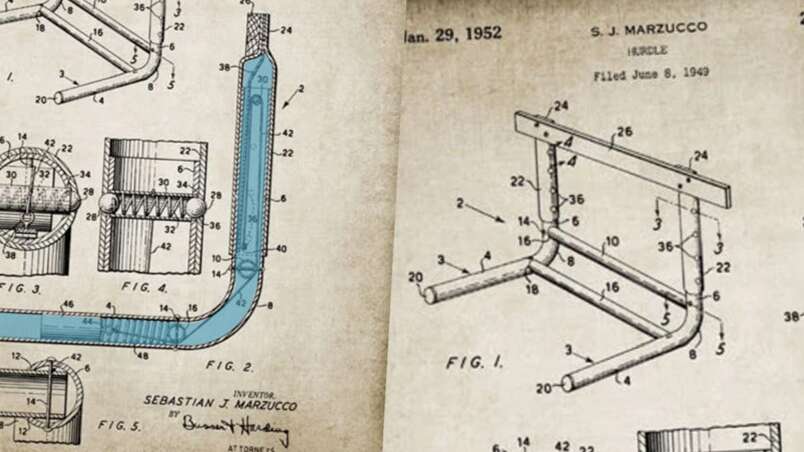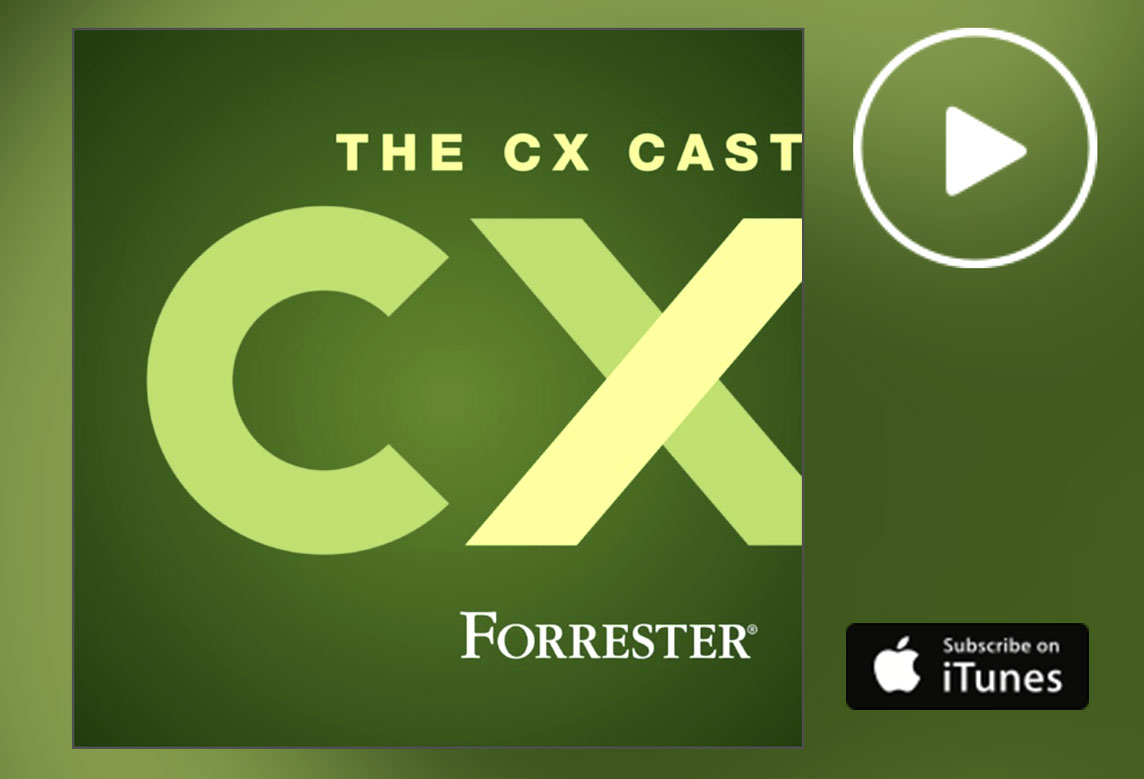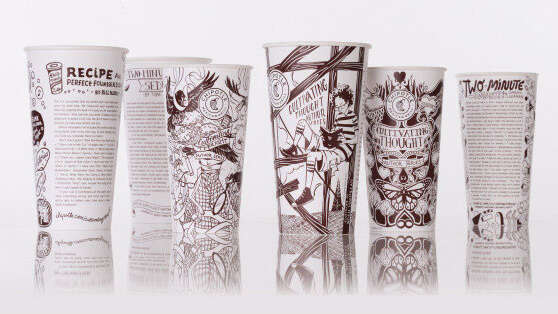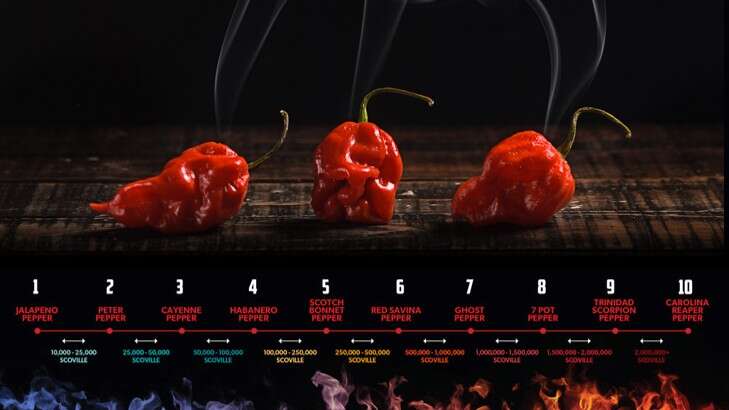CX, TYPEWRITERS AND HURDLES
WHAT CAN CX LEARN FROM...
SURPRISING INSIGHTS BY BRINGING IN OFF-BEAT CASES
LONG READ
CX, TYPEWRITERS AND HURDLES
HOW SLOWING DOWN CAN BE REALLY SMART
The letters on your keyboard are stupid. They seem to be arranged completely at random, without any thought to it. Why aren’t they organised alphabetically? However….this is done so by design. To slow you down. It’s an idea from 150 years ago that still affects us all when typing. Not only is it fascinating idea, it is also very valuable. And… completely untrue.
So, the story is that originally keys were indeed arranged in alphabetical order. But that typists got too good at their job. Typing as fast as they did led the “arms” of the typewriter to get cross-wired and stuck. In response keyboard manufacturers then randomised the order of keys to intentionally slow down typists and keep their type writing machines free from errors (and costly repairs).
Of course, reading this I was immediately captivated. It just sounded too good a story to be true. Well, turns out it’s indeed not true at all. But to get there, I spiraled down a rabbit-hole called ‘the history of typewriters’. A wholly unexpected ride littered with valuable lessons we can use to improve our CX programmes, NPS initiatives and all other tasks, roles or ideas. A ride into inventions, blind friends, world records, odd designs, commercial decisions and about creating lasting impact.
Curiosity is never ever a bad idea. Exploring different fields will always maximise your expertise. And the further apart, the more there is to learn.
So, typewriters it is. Ready?
The first patents describe ‘an artificial machine for impressing letters’ dating from the 18th century. But it’s the 19th century where the real magic happens. The Italian Pellegrino Turri invented a machine to aid a befriended blind Countess, that’s a story in its own right. By the way, he also invented the carbon paper. Another Italian, Giuseppe Ravizza, created a prototype typewriter in 1855 that he beautifully called the Cembalo Scrivano. The “Scribe Harpsichord”… A lesson right there, always give your product or programme an inspiring name rather than a functional description!
And there are many, many inventors and scientists and designers that share credits. Historians have estimated that some form of typewriter was invented 52 times until it came to a workable design.
Inventing and re-inventing until it becomes workable sounds quite like our CX profession.
The first successful commercially sold machine was the ‘Hansen Writing Ball’ of 1870. More resembling a pincushion, it’s a strange and fascinating design. Odd and beautiful at once. But however eccentric it may look to us now, it was the design widely used in offices of the day. And it even won First Prize at the 1873 Vienna World Exhibition.
But… that very same year New York based company Remington and Sons began producing their first typewriters on March 1, 1873. Hey, exactly 150 years ago! It is this Remington typewriter that established two things. First, the official name ‘Type-Writer’. And second, it introduced the QWERTY layout.
Up until then all machines used an alphabetical key arrangement. But not Remington. We already know the story that they intentionally randomised the order of the keys to slow down typists. But the funny thing is, it’s exactly the other way around! The design was intended to speed up the pace. And actually it’s very simple. The QWERTY layout sees letters split in areas left and right. This new design allowed to alternate hands while typing, which makes typing faster.
Remington wasn’t alone in exploring how to optimise performance. Blickensderfer, a competing typewriter, introduced the sequence “DHIATENSOR” in the top row. The reasoning behind not odd at all. They thought it would be smart to have the 10 letters closest together that are capable of composing 70% of the words in the English language. Sounds good… in theory. But can you imagine typing with your fingers getting all entangled in the top row?
If you hadn’t already figured it out, the lesson here is: involve your customers. Test, prototype, figure it out. Don’t design from behind your safe, comfortable drawing board.
So is the design for QWERTY the Holy Grail? No, not at all. It has a disbalance. Thousands of English words can be spelled with only the left hand, versus just a couple of hundred words that can by typed using only the right hand on the keyboard.
But it doesn’t need to be perfect.
It just needs to be better than the rest.
And their design was better than the rest. With the Remington typewriter the 1888 world record was set to a whopping 125 words per minute (blindfolded). With it, QWERTY became the industry standard design we are still using today.
Ok, lessons all over the place for everyone of us involved in CX and all sorts of other business programmes, initiatives and roles. I don’t want to spell them out. But if I would, the easy option would be to focus on speeding up or improving the performance of whatever it is you set out to do. Of course.
But remember how we started? How intriguing the intentionally slowing down part was? That’s more interesting. Because surely you cannot apply that particular aspect to your work and benefit from it?
Well, yes you can. Designing ‘hurdles’ is even a really smart thing to do if you want to create impact.
You are giving a presentation? Limit it to only 25 or 50 participants. Your presentation will be more interesting, just because you’ve added the sensation that someone ‘might miss out’. It also empowers you to influence registration. That obnoxious person who just cannot stop venting criticism even though he’s not an expert? ‘Sorry, the room is full’. Or that analyst who just cannot stop herself from correcting out loud when you (intentionally) use rounded numbers? ‘Aw, the last seat was just booked’. Or that one influential senior person that gives extra weight to your presentation? ‘I have a seat reserved for you.’
It’s just an example, there are many more. Are you hosting a workshop? Give potential attendees some assignment they have to do first. Sending a report? Only send it to those that commit to discussing it in their teams and invite you to join. And so on and on…
Let me know what you come up with to slow things down.
Just don’t be quick with it.
LONG READ
CX, TYPEWRITERS AND HURDLES
HOW SLOWING DOWN CAN BE REALLY SMART
The letters on your keyboard are stupid. They seem to be arranged completely at random, without any thought to it. Why aren’t they organised alphabetically? However….this is done so by design. To slow you down. It’s an idea from 150 years ago that still affects us all when typing. Not only is it fascinating idea, it is also very valuable. And… completely untrue.
So, the story is that originally keys were indeed arranged in alphabetical order. But that typists got too good at their job. Typing as fast as they did led the “arms” of the typewriter to get cross-wired and stuck. In response keyboard manufacturers then randomised the order of keys to intentionally slow down typists and keep their type writing machines free from errors (and costly repairs).
Of course, reading this I was immediately captivated. It just sounded too good a story to be true. Well, turns out it’s indeed not true at all. But to get there, I spiraled down a rabbit-hole called ‘the history of typewriters’. A wholly unexpected ride littered with valuable lessons we can use to improve our CX programmes, NPS initiatives and all other tasks, roles or ideas. A ride into inventions, blind friends, world records, odd designs, commercial decisions and about creating lasting impact.
Curiosity is never ever a bad idea. Exploring different fields will always maximise your expertise. And the further apart, the more there is to learn.
So, typewriters it is. Ready?
The first patents describe ‘an artificial machine for impressing letters’ dating from the 18th century. But it’s the 19th century where the real magic happens. The Italian Pellegrino Turri invented a machine to aid a befriended blind Countess, that’s a story in its own right. By the way, he also invented the carbon paper. Another Italian, Giuseppe Ravizza, created a prototype typewriter in 1855 that he beautifully called the Cembalo Scrivano. The “Scribe Harpsichord”… A lesson right there, always give your product or programme an inspiring name rather than a functional description!
And there are many, many inventors and scientists and designers that share credits. Historians have estimated that some form of typewriter was invented 52 times until it came to a workable design.
Inventing and re-inventing until it becomes workable sounds quite like our CX profession.
The first successful commercially sold machine was the ‘Hansen Writing Ball’ of 1870. More resembling a pincushion, it’s a strange and fascinating design. Odd and beautiful at once. But however eccentric it may look to us now, it was the design widely used in offices of the day. And it even won First Prize at the 1873 Vienna World Exhibition.
But… that very same year New York based company Remington and Sons began producing their first typewriters on March 1, 1873. Hey, exactly 150 years ago! It is this Remington typewriter that established two things. First, the official name ‘Type-Writer’. And second, it introduced the QWERTY layout.
Up until then all machines used an alphabetical key arrangement. But not Remington. We already know the story that they intentionally randomised the order of the keys to slow down typists. But the funny thing is, it’s exactly the other way around! The design was intended to speed up the pace. And actually it’s very simple. The QWERTY layout sees letters split in areas left and right. This new design allowed to alternate hands while typing, which makes typing faster.
Remington wasn’t alone in exploring how to optimise performance. Blickensderfer, a competing typewriter, introduced the sequence “DHIATENSOR” in the top row. The reasoning behind not odd at all. They thought it would be smart to have the 10 letters closest together that are capable of composing 70% of the words in the English language. Sounds good… in theory. But can you imagine typing with your fingers getting all entangled in the top row?
If you hadn’t already figured it out, the lesson here is: involve your customers. Test, prototype, figure it out. Don’t design from behind your safe, comfortable drawing board.
So is the design for QWERTY the Holy Grail? No, not at all. It has a disbalance. Thousands of English words can be spelled with only the left hand, versus just a couple of hundred words that can by typed using only the right hand on the keyboard.
But it doesn’t need to be perfect. It just needs to be better than the rest.
And their design was better than the rest. With the Remington typewriter the 1888 world record was set to a whopping 125 words per minute (blindfolded). With it, QWERTY became the industry standard design we are still using today.
Ok, lessons all over the place for everyone of us involved in CX and all sorts of other business programmes, initiatives and roles. I don’t want to spell them out. But if I would, the easy option would be to focus on speeding up or improving the performance of whatever it is you set out to do. Of course.
But remember how we started? How intriguing the intentionally slowing down part was? That’s more interesting. Because surely you cannot apply that particular aspect to your work and benefit from it?
Well, yes you can. Designing ‘hurdles’ is even a really smart thing to do if you want to create impact.
You are giving a presentation? Limit it to only 25 or 50 participants. Your presentation will be more interesting, just because you’ve added the sensation that someone ‘might miss out’. It also empowers you to influence registration. That obnoxious person who just cannot stop venting criticism even though he’s not an expert? ‘Sorry, the room is full’. Or that analyst who just cannot stop herself from correcting out loud when you (intentionally) use rounded numbers? ‘Aw, the last seat was just booked’. Or that one influential senior person that gives extra weight to your presentation? ‘I have a seat reserved for you.’
It’s just an example, there are many more. Are you hosting a workshop? Give potential attendees some assignment they have to do first. Sending a report? Only send it to those that commit to discussing it in their teams and invite you to join. And so on and on…
Let me know what you come up with to slow things down.
Just don’t be quick with it.
CX, SILVER AND DOUBLE BLACK
WHAT CAN CX LEARN FROM...
SURPRISING INSIGHTS BY BRINGING IN OFF-BEAT CASES
LONG READ
CX, SILVER AND DOUBLE BLACK
HOW WELL-CHOSEN NAMES BRING IN CROWDS
A well-chosen name is priceless. It can give the sense of energy, ambition and help you create a stir. It can take you to the moon and back. Let’s put it like this: did you ever think of your initiatives as something that is exquisite, delicate and to be savoured? Probably not. But let’s start doing so today.
Consider the name W154 for a moment. It’s a puzzling name, right? At the very least it’s a functional name. Now, attach the name Mercedes-Benz to it and it will spark some curiosity. Still, it can be anything from some boring engine part to a read-out of a metric of some sorts. Now, see what happens when I now tell you the nickname for the W154 and all Mercedes’ racing cars: the “Silver Arrow”. All of a sudden a world opens up and your imagination takes off. In fact, the W154 is Mercedes-Benz’ very successful 1938 Grand Prix racing car designed by Rudolf Uhlenhaut, the head of Mercedes’ Racing in the days as described in the wonderful 1843 magazine of The Economist. It is a remarkable feat of aerodynamics, balance and speed (reaching a stunning 185mph) and set in an amazing design. Driver and European Champion Rudolf Caracciola liked it as ‘it was a car that needed finesse rather than force to handle.’
The nickname ‘Silver Arrow’ is perfect. So well chosen as it does not only reflect its features, but as well what it’s capable of achieving. It’s a sense of energy, ambition, force. It’s a promise.
I got chastised by a friend for using the English translation of the actual original German name “Silberpfeile”. It’s a mythical name. A name that is savoured. And indeed that friend tried to describe the importance of it, including that gesture you make when describing something almost intangible: thumb and fingers delicately pressed together and held up as if you’re describing that exquisite dish you recently had and you’re contemplating ways to describe it.
Now. Imagine someone is doing that whilst talking about your programme.
Chances are this struck you dumbfounded. But consider why it would be such a stretch of the imagination. Why would it be so impossible to have colleagues in your organisation talk about your initiative that way? I am a firm believer that this is something that should be your ambition. Because your programme will be better in its setup and approach. Because it will gain a bigger following in your organisation, and therefore more and better results. Because it challenges you to think bigger and be more ambitious. And all of that starts by giving it a name. A good name.
Let’s start with some pseudo-statistics. I estimate 99% of company programmes do not have a name (yes, I made up that percentage). Let’s be clear. A programme should not be a description. It should not be a functional summary of the activities you do. That is the equivalent of the W154. Attaching a name to it can help you signify or evoke a feeling or emotion that instantly shows people what you’re after.
You want to be about ‘finesse rather than force’? Give it the right name then.
Consider for instance calling your programme ‘‘Heartbeat’. It has the connotation of listening to customers or employees, finding their pulse, aiming for their hearts… and it opens up a whole array of possibilities to show your organisation what it is that you’re after. It opens up loads of possibilities for programme visuals and sparks new initiatives that fit this theme, including actually visiting a hospital and learning how they treat patients and then challenge the participants to apply those learnings to what you’re trying to achieve. And there are many, many other names to consider. Each with its own specific vibe, idea and promise.
Looking for names shouldn’t be confined to the overall programme. It can be used for any of your initiatives in it. What’s stopping you from calling your workshop a ‘Bootcamp’. Notice how immediately it gives off a wholly different vibe and sets other expectations? It most certainly will draw in a different crowd. Or start calling your report a ‘Compass’, the essential guide for the organisation on route to their destination i.e. strategy. You can easily see the visual as a logo, perhaps combined with some wild waters, mountain peaks or any other metaphorical hardship to overcome in your quest for customer centricity. It sets the stage to focus on the journey, rather than the ‘scores-only’ focus.
Or as yet another example, what about calling a training course the ‘Black Label’ training. How cool is that? Imagine the visuals you can use, take your inspiration from the Johnnie Walker label that is pitch black with gold lines. Even better, as Johnnie Walker upped their game as well by introducing the ‘Double Black’. You name your training that and guaranteed it will cause a stir, people wanting to know more about it and eager to sign up. No, not to sign up. Rather to ‘be a part of it’.
And now you’ve created something that transcends the actual, functional content of the training. It’s a thing, a movement, something extraordinary.
Of course you have to make sure to apply this thinking to the content of the training as well. It should match the promise you made, just as any content should reflect what it says on the wrapper. But giving an apt name, a name that evokes a feeling or some image, is the way to start this whole process. For you yourself as well as the organisation.
Easier said then done you might say. Where do I find names like that? Well, all around you. Just take notice of some remarkable, funny, interesting, awful, gritty or poetic names. Maybe it’s something you just suddenly notice on the label of an exclusive beer that is served (that’s where I got the ‘Grand Cru’ idea from, using it for the title and subtitle of this blog). Maybe you hear it in a name of a song, or you see an advert for a watch or a car (for example, the name ‘Phantom’ for the Rolls-Royce series is brilliant and for some time has sparked my imagination what to use it for). You see, anything goes. But for now, from the many examples, let’s go for bottles this time.
Wait… what? Yes, bottles. Some time ago I stumbled on an apparent tradition to give bottles a name to indicate their size. And oh, what beautiful names they are. Manufacturers of champagne offer a ‘Magnum’ containing 1,5l which is equal to 2 regular bottles. Most of us will know that. But, it turns out there is a whole range of bottles increasing in size that comes after, and with equally increasing fantastic names. What about the ‘Jeróboam’ (equal to 4 bottles), the ‘Salmanazar’ (equal to 12 bottles), the ‘Nebuchadnezzar’ (equal to 20 bottles) and the biggest one of all containing a stunning 30 liters of champagne or the volume of 40 bottles, is called ‘Melchizedek’ or sometimes the ‘Midas’. Awesome.
Most of us will have some vague memory of King Midas turning everything he touches in gold. And it’s this image of over-the-top riches and grandeur that is so befitting for the huge bottle of champagne, the biggest and most daunting one of them all. Just awesome.
Can you imagine your internal annual report be called like that, or the final workshop of a series?
So what’s the lesson here? A well-chosen name foregoes the mere function and evokes more than just the content. It is an incredible card to play. And one that you can do too. Just be alert for names you hear, and don’t be afraid to use them for your own programme or initiatives. It’s so worth it.
LONG READ
CX, SILVER AND DOUBLE BLACK
HOW WELL-CHOSEN NAMES BRING IN CROWDS
A well-chosen name is priceless. It can give the sense of energy, ambition and help you create a stir. It can take you to the moon and back. Let’s put it like this: did you ever think of your initiatives as something that is exquisite, delicate and to be savoured? Probably not. But let’s start doing so today.
Consider the name W154 for a moment. It’s a puzzling name, right? At the very least it’s a functional name. Now, attach the name Mercedes-Benz to it and it will spark some curiosity. Still, it can be anything from some boring engine part to a read-out of a metric of some sorts. Now, see what happens when I now tell you the nickname for the W154 and all Mercedes’ racing cars: the “Silver Arrow”. All of a sudden a world opens up and your imagination takes off. In fact, the W154 is Mercedes-Benz’ very successful 1938 Grand Prix racing car designed by Rudolf Uhlenhaut, the head of Mercedes’ Racing in the days as described in the wonderful 1843 magazine of The Economist. It is a remarkable feat of aerodynamics, balance and speed (reaching a stunning 185mph) and set in an amazing design. Driver and European Champion Rudolf Caracciola liked it as ‘it was a car that needed finesse rather than force to handle.’
The nickname ‘Silver Arrow’ is perfect. So well chosen as it does not only reflect its features, but as well what it’s capable of achieving. It’s a sense of energy, ambition, force. It’s a promise.
I got chastised by a friend for using the English translation of the actual original German name “Silberpfeile”. It’s a mythical name. A name that is savoured. And indeed that friend tried to describe the importance of it, including that gesture you make when describing something almost intangible: thumb and fingers delicately pressed together and held up as if you’re describing that exquisite dish you recently had and you’re contemplating ways to describe it.
Now. Imagine someone is doing that whilst talking about your CX Programme.
Chances are this struck you dumbfounded. But consider why it would be such a stretch of the imagination. Why would it be so impossible to have colleagues in your organisation talk about your initiative that way? I am a firm believer that this is something that should be your ambition. Because your programme will be better in its setup and approach. Because it will gain a bigger following in your organisation, and therefore more and better results. Because it challenges you to think bigger and be more ambitious. And all of that starts by giving it a name. A good name.
Let’s start with some pseudo-statistics. I estimate 99% of CX programmes do not have a name (yes, I made up that percentage). Let’s be clear. A CX programme should not be a description. It should not be a functional summary of the activities you do. That is the equivalent of the W154. Attaching a name to it can help you signify or evoke a feeling or emotion that instantly shows people what you’re after.
You want to be about ‘finesse rather than force’? Give it the right name then.
Consider for instance calling your programme ‘‘Heartbeat’. It has the connotation of listening to customers, finding their pulse, aiming for their hearts… and it opens up a whole array of possibilities to show your organisation what it is that you’re after. It opens up loads of possibilities for programme visuals and sparks new initiatives that fit this theme, including actually visiting a hospital and learning how they treat patients and then challenge the participants to apply those learnings to what you’re trying to achieve. And there are many, many other names to consider. Each with its own specific vibe, idea and promise.
Looking for names shouldn’t be confined to the overall programme. It can be used for any of your initiatives in it. What’s stopping you from calling your workshop a ‘Bootcamp’. Notice how immediately it gives off a wholly different vibe and sets other expectations? It most certainly will draw in a different crowd. Or start calling your report a ‘Compass’, the essential guide for the organisation on route to their destination i.e. strategy. You can easily see the visual as a logo, perhaps combined with some wild waters, mountain peaks or any other metaphorical hardship to overcome in your quest for customer centricity. It sets the stage to focus on the journey, rather than the ‘scores-only’ focus.
Or as yet another example, what about calling a training course the ‘Black Label’ training. How cool is that? Imagine the visuals you can use, take your inspiration from the Johnnie Walker label that is pitch black with gold lines. Even better, as Johnnie Walker upped their game as well by introducing the ‘Double Black’. You name your training that and guaranteed it will cause a stir, people wanting to know more about it and eager to sign up. No, not to sign up. Rather to ‘be a part of it’.
And now you’ve created something that transcends the actual, functional content of the training. It’s a thing, a movement, something extraordinary.
Of course you have to make sure to apply this thinking to the content of the training as well. It should match the promise you made, just as any content should reflect what it says on the wrapper. But giving an apt name, a name that evokes a feeling or some image, is the way to start this whole process. For you yourself as well as the organisation.
Easier said then done you might say. Where do I find names like that? Well, all around you. Just take notice of some remarkable, funny, interesting, awful, gritty or poetic names. Maybe it’s something you just suddenly notice on the label of an exclusive beer that is served (that’s where I got the ‘Grand Cru’ idea from, using it for the title and subtitle of this blog). Maybe you hear it in a name of a song, or you see an advert for a watch or a car (for example, the name ‘Phantom’ for the Rolls-Royce series is brilliant and for some time has sparked my imagination what to use it for). You see, anything goes. But for now, from the many examples, let’s go for bottles this time.
Wait… what? Yes, bottles. Some time ago I stumbled on an apparent tradition to give bottles a name to indicate their size. And oh, what beautiful names they are. Manufacturers of champagne offer a ‘Magnum’ containing 1,5l which is equal to 2 regular bottles. Most of us will know that. But, it turns out there is a whole range of bottles increasing in size that comes after, and with equally increasing fantastic names. What about the ‘Jeróboam’ (equal to 4 bottles), the ‘Salmanazar’ (equal to 12 bottles), the ‘Nebuchadnezzar’ (equal to 20 bottles) and the biggest one of all containing a stunning 30 liters of champagne or the volume of 40 bottles, is called ‘Melchizedek’ or sometimes the ‘Midas’. Awesome.
Most of us will have some vague memory of King Midas turning everything he touches in gold. And it’s this image of over-the-top riches and grandeur that is so befitting for the huge bottle of champagne, the biggest and most daunting one of them all. Just awesome.
Can you imagine your internal annual CX report be called like that, or the final workshop of a series?
So what’s the lesson here? A well-chosen name foregoes the mere function and evokes more than just the content. It is an incredible card to play. And one that you can do too. Just be alert for names you hear, and don’t be afraid to use them for your own programme or initiatives. It’s so worth it.
CX, SEAGULLS AND MURDER
WHAT CAN CX LEARN FROM...
SURPRISING INSIGHTS BY BRINGING IN OFF-BEAT CASES
LONG READ
CX, SEAGULLS AND MURDER
HOW THE RIGHT NAME CAN HELP YOU GET BETTER
Good CX Programmes become better by being opposed. Being challenged on assumed truths, deliverables and solutions. Good. However, superb programmes manage to change the opposers themselves. Let’s explore and get some learnings from Popes, Presidents and seagulls.
Organising opposition in your company is a long held challenge. Especially within typical business environments. Ideally you have creative, brave people that inspire you to new insights. That bring in novel viewpoints and never thought of solutions. However, the creativity and audacity to stand up against assumed (political) truths is in short supply when you have to find them within organisations. We all know that. So it’s no surprise that Programme Boards and Steering Committees can often be a tough place. One where you find yourself measured to the rules of the company when it comes to reporting, resources, delivery and so on.
If only such a board could not size you up, but instead help you tackle business rules…
Without a doubt the most famous role of an opposer is a role that is now some 500 years old: the role of the Devil’s Advocate. It was Pope Leo X (1513-1521) that gave us this means to systematically evoke disruptive thinking. Why did he come up with this? Let’s pause a bit and take a look at the man himself. A man, by all means, quite interesting. Leo X is said to have had a pleasant voice and cheerful temper. He was accomplished in humanist studies and enjoyed music, literature and poetry. He also excelled in what we would now call ‘stand-up comedy’: improvising and creating verses on the spot. And here’s the thing. He didn’t just happen to be good at it, he loved it so much he indulged in it. A bit too much.
His love of masquerades, buffoonery and irresponsible frivolous pursuits led Leo X to be ridiculed by his contemporaries. And to make things worse, his lavish expenses and immoderate personal luxury quickly forced him to borrow large sums from bankers and princes. Even to pawning palace furniture and statues of the apostles. Just to pay the bills. Of course not everyone was too pleased, so consequently he escaped a plot to be poisoned. And the overall lavish lifestyle sparked the Reformation. Talk about a legacy.
But Leo recognized the importance of contrasting views and novel or extraordinary opinions. Even if it was sometimes only for amusement and ridicule.
He very well knew bringing in other voices brought the room alive and made people step up their game.
Under Leo X this concept saw its way in the canonization process of the Roman Catholic Church for the first time. An individual was appointed to be sceptical. To withstand being carried away. To look for flaws in argumentation or evidence and generally to argue against a candidate listed for sainthood. In this very first case it was the canonisation of St. Lawrence Justinian. That ‘opposite promoter’ was the promotor fidei (Promoter of the Faith) and is better known today as the advocatus diabolic: The Devil’s advocate. The idea is that the Devil would do anything to obstruct another saint to be canonized. And as a side-kick to the almighty Devil himself, the one taking up this role is someone to be taken very, very seriously. It’s a good name. Definitely. Later, in 1587, Pope Sixtus V established it as an official office of the Vatican.
The concept proved to be a popular approach. And over the years, decades and centuries the concept evolved. Even to the point that just one Devil’s advocate wasn’t good enough anymore. O no, it even became a whole Devil’s bar of advocates. Setting yourself up against more and more people whose single task it is to oppose you. Looking for flaws. Looking for things wrong with it. Looking to bring you off balance and get your emotions get the better of you (as a side note, the word ‘emotion’ dates back to 1579 when it got adapted from the French word émouvoir which already means “to stir up”).
Ok. So not just one, but a whole bar of opposers. As you might imagine, especially in risk-adverse organisations this became very popular. Environment where extreme efforts are taken to prevent mistakes. Like politics.
‘Moot Courts’ were used in the late 18th century by the third U.S. president Thomas Jefferson. These were such bars of Devil’s advocates. He used them to prepare for especially difficult debates with opponents. And although the word makes absolute sense – the word moot is actually an Old Norse word for both meeting and debate – it also lacks something…
The New Yorker published a very interesting article called ‘The Power Of Names’. It says that words like ‘“dawdle” and “meander” sound as unhurried as the walking speeds they describe”. Yes. Even more silly, let’s look at what a German poet called Christian Morgenstern wrote: “Seagulls all look like they are called Emma.” This is nonsense poetry. However, he does touch upon the connection between word and image.
Sometimes linguistic labels just perfectly match what they describe.
So does ‘Moot Court’ describe its intended role? No, not really. It invokes at best a scenery of mooing cows, slowly grazing and not in a particular hurry. That’s not a name that really has a sparkle. It does not tell you to be careful, prepare for it and even be afraid of it. The term ‘Devil’s Advocate’ is far better in that respect. But… it can be even better.
Enter the ‘Murder Board’. This is the name the U.S. military or NASA (they contest who coined the term) came up with in the 1970s. Try to say that name without deepening your voice and sounding ominous. It was initiated to make the process of people arguing against you feeling even more hectic, disruptive and turbulent. For the ones presenting. But also for the people on the board. Just by the name immediately roles are clear. As it was described:
Murder Board: A group of subject matter experts “charged with the responsibility to slam a candidate or proposer of an idea up against the wall with tough questioning.”
To this day in U.S. politics these boards are used in preparing for tough debates and hearings.
So where does that leave us with our CX programmes? Sure, we can set up a Murder Board ourselves. That could be a good (and scary) incentive to raise the bar. My point however is about being very conscious of the effect a name can bring to the table. I mean, is it really such a surprise that if you initiate a Steering Committee, the people on it take up the behaviour that they associate with it? You told them to ‘steer’. So that’s what they’ll do.
Just imagine what interaction you would have with exactly the same set of people if you called them a Trustees Panel, a CX Guild, a Launching Platform (derived from ‘Shoot For The Moon’) or a G2G Council (‘Good To Great’). I’m making them up as I go along. But each and everyone has a positive, constructive vibe and inherent behaviour in them. Just for its title.
So yes, have people oppose you to challenge you to be better. But by using the right words, your fierce opponents become your allies. Not fighting against you because their role says so, but fighting with you.
And all of that, just because you changed their title.
LONG READ
CX, SEAGULLS AND MURDER
HOW THE RIGHT NAME CAN HELP YOU GET BETTER
Good CX Programmes become better by being opposed. Being challenged on assumed truths, deliverables and solutions. Good. However, superb programmes manage to change the opposers themselves. Let’s explore and get some learnings from Popes, Presidents and seagulls.
Organising opposition in your company is a long held challenge. Especially within typical business environments. Ideally you have creative, brave people that inspire you to new insights. That bring in novel viewpoints and never thought of solutions. However, the creativity and audacity to stand up against assumed (political) truths is in short supply when you have to find them within organisations. We all know that. So it’s no surprise that Programme Boards and Steering Committees can often be a tough place. One where you find yourself measured to the rules of the company when it comes to reporting, resources, delivery and so on.
If only such a board could not size you up, but instead help you tackle business rules…
Without a doubt the most famous role of an opposer is a role that is now some 500 years old: the role of the Devil’s Advocate. It was Pope Leo X (1513-1521) that gave us this means to systematically evoke disruptive thinking. Why did he come up with this? Let’s pause a bit and take a look at the man himself. A man, by all means, quite interesting. Leo X is said to have had a pleasant voice and cheerful temper. He was accomplished in humanist studies and enjoyed music, literature and poetry. He also excelled in what we would now call ‘stand-up comedy’: improvising and creating verses on the spot. And here’s the thing. He didn’t just happen to be good at it, he loved it so much he indulged in it. A bit too much.
His love of masquerades, buffoonery and irresponsible frivolous pursuits led Leo X to be ridiculed by his contemporaries. And to make things worse, his lavish expenses and immoderate personal luxury quickly forced him to borrow large sums from bankers and princes. Even to pawning palace furniture and statues of the apostles. Just to pay the bills. Of course not everyone was too pleased, so consequently he escaped a plot to be poisoned. And the overall lavish lifestyle sparked the Reformation. Talk about a legacy.
But Leo recognized the importance of contrasting views and novel or extraordinary opinions. Even if it was sometimes only for amusement and ridicule,
he very well knew bringing in other voices brought the room alive and made people step up their game.
Under Leo X this concept saw its way in the canonization process of the Roman Catholic Church for the first time. An individual was appointed to be sceptical. To withstand being carried away. To look for flaws in argumentation or evidence and generally to argue against a candidate listed for sainthood. In this very first case it was the canonisation of St. Lawrence Justinian. That ‘opposite promoter’ was the promotor fidei (Promoter of the Faith) and is better known today as the advocatus diabolic: The Devil’s advocate. The idea is that the Devil would do anything to obstruct another saint to be canonized. And as a side-kick to the almighty Devil himself, the one taking up this role is someone to be taken very, very seriously. It’s a good name. Definitely. Later, in 1587, Pope Sixtus V established it as an official office of the Vatican.
The concept proved to be a popular approach. And over the years, decades and centuries the concept evolved. Even to the point that just one Devil’s advocate wasn’t good enough anymore. O no, it even became a whole Devil’s bar of advocates. Setting yourself up against more and more people whose single task it is to oppose you. Looking for flaws. Looking for things wrong with it. Looking to bring you off balance and get your emotions get the better of you (as a side note, the word ‘emotion’ dates back to 1579 when it got adapted from the French word émouvoir which already means “to stir up”).
Ok. So not just one, but a whole bar of opposers. As you might imagine, especially in risk-adverse organisations this became very popular. Environment where extreme efforts are taken to prevent mistakes. Like politics.
‘Moot Courts’ were used in the late 18th century by the third U.S. president Thomas Jefferson. These were such bars of Devil’s advocates. He used them to prepare for especially difficult debates with opponents. And although the word makes absolute sense – the word moot is actually an Old Norse word for both meeting and debate – it also lacks something…
The New Yorker published a very interesting article called ‘The Power Of Names’. It says that words like ‘“dawdle” and “meander” sound as unhurried as the walking speeds they describe”. Yes. Even more silly, let’s look at what a German poet called Christian Morgenstern wrote: “Seagulls all look like they are called Emma.” This is nonsense poetry. However, he does touch upon the connection between word and image.
Sometimes linguistic labels just perfectly match what they describe.
So does ‘Moot Court’ describe its intended role? No, not really. It invokes at best a scenery of mooing cows, slowly grazing and not in a particular hurry. That’s not a name that really has a sparkle. It does not tell you to be careful, prepare for it and even be afraid of it. The term ‘Devil’s Advocate’ is far better in that respect. But… it can be even better.
Enter the ‘Murder Board’. This is the name the U.S. military or NASA (they contest who coined the term) came up with in the 1970s. Try to say that name without deepening your voice and sounding ominous. It was initiated to make the process of people arguing against you feeling even more hectic, disruptive and turbulent. For the ones presenting. But also for the people on the board. Just by the name immediately roles are clear. As it was described:
A group of subject matter experts “charged with the responsibility to slam a candidate or proposer of an idea up against the wall with tough questioning.”
To this day in U.S. politics these boards are used in preparing for tough debates and hearings.
So where does that leave us with our CX programmes? Sure, we can set up a Murder Board ourselves. That could be a good (and scary) incentive to raise the bar. My point however is about being very conscious of the effect a name can bring to the table. I mean, is it really such a surprise that if you initiate a Steering Committee, the people on it take up the behaviour that they associate with it? You told them to ‘steer’. So that’s what they’ll do.
Just imagine what interaction you would have with exactly the same set of people if you called them a Trustees Panel, a CX Guild, a Launching Platform (derived from ‘Shoot For The Moon’) or a G2G Council (‘Good To Great’). I’m making them up as I go along. But each and everyone has a positive, constructive vibe and inherent behaviour in them. Just for its title.
So yes, have people oppose you to challenge you to be better. But by using the right words, your fierce opponents become your allies. Not fighting against you because their role says so, but fighting with you.
Because you changed their title.
FORRESTER PODCAST
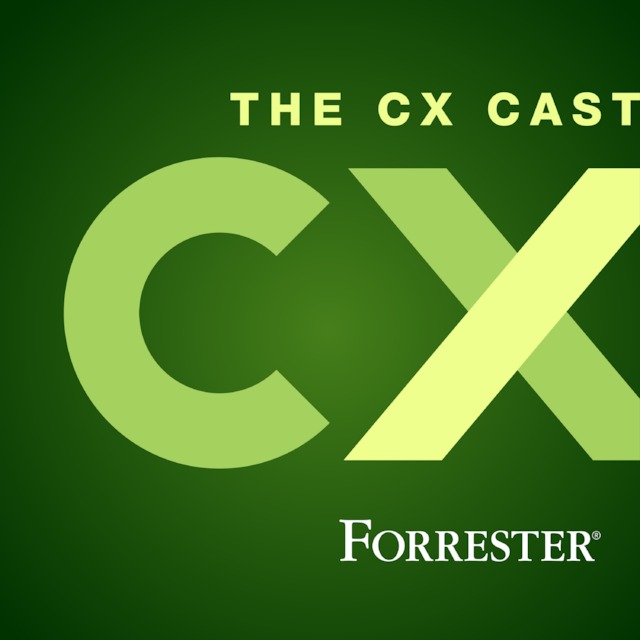
CX GRAND CRU
SURPRISING CX FLAVOURS BY ADDING OFF-BEAT IDEAS DURING BREWING
LISTEN
My Forrester Podcasts
SUCH A COOL AND FUN CONVERSATION
One of the best (if not the best) podcasts around is the one by Forrester. With a wide variety of topics, interesting takes and bucket loads of expertise, it’s insightful to listen to at any given moment. And now, I was invited to join the show. It was great…
Hosted by Sam Stern and Maxie Schmidt-Subramanian we talk on the first podcast (episode 149) how to use data and customer feedback to tell stories that get employees to pay attention to CX. We also talk about the pros and cons of Net Promoter Score, and the importance of having a discussion around why we are asking customers for feedback, not just obsessing over the scores.
In the second podcast (episode 150) this time we’re talking about learnings how to create a high-functioning NPS program, one that is responsive to local needs, but also that has consistency across geographies. Topics covered include how to ensure consistency of surveys and reporting, integration of data, and then using local colleagues to make it relevant for each country. We also talk about how to select the right people to manage NPS program, people with a passion for telling the story of the data, rather than someone with data expertise who can’t tell an engaging story.
CX, JALAPEÑOS AND COFFEE
WHAT CAN CX LEARN FROM...
SURPRISING INSIGHTS BY BRINGING IN OFF-BEAT CASES
LONG READ
CX, JALAPEÑOS AND COFFEE
HOW THE SMALLEST OF HEAT CAN HAVE A BIG IMPACT
So you’ll often hear me talk about engaging the organisation. And when I do I’ll usually be quick to point out that it’s all about creating sparkles. Sparkles being a metaphore for a buzzing, inspiring and surprising environment. But sparkles alone will not suffice. Sometimes what you need is the occasional jalapeño.
A jalapeño is a metaphor I use for something that gives the organisation some heat. That hurts or provokes a bit. Shakes things up. Because that is what gets people to respond and pay attention. As Chip and Dan Heath (authors of Made to Stick: Why Some Ideas Survive and Others Die) so aptly say: “The most basic way to get someone’s attention is this: Break a pattern.” It’s become such a feature of my focus on human behaviour that I made the sparkles and the jalapeño iconic, literally. See if you spot them in my model and presentations.
I’m also terribly fond of useless knowledge. Always have been. So I’ll tell you useless stuff like who invented ear muffs, or why judges wear black. Stuff like that. Love it. So as it goes, one day I actually looked up the word ‘jalapeño’. Sure, there are many varieties varying in size and heat. And it belongs to the species Capsicum annuum. And in Mexico the jalapeño is also known as the cuaresmeño and gordo. Smoke-dried it’s called chilpoctli in Nahuatl language, more commonly known as chipotle.
As divergent thinking goes, this sets off a whole world of new leads, thought experiments, challenges to see if these novel learnings can be somehow connected to our knowledge of CX. Let’s dwell on two.
The first lead, am I correct in depicting a jalapeño to stir up an organisation? Well, the heat of a jalapeño is measured by the Scoville scale. How comfortable, as we from CX and NPS love to measure. This measurement is somewhat older. Devised in 1912 and named after its creator, the American pharmacist Wilbur Scoville. Turns out a jalapeño is not that hot at all, ranging between 1,000 and 20,000 Scoville heat units depending on variety. The world’s hottest pepper is the Carolina Reaper with an astounding 2,200,000 score. I am truly happy having learned such an awesome name (although the not very much milder ‘Trinidad Scorpion Butch T pepper’ makes me cry with joy as well.). But despite being a milder variety, I’m not going to replace the jalapeño in my metaphor. There’s something to be said about the ease of recognition, and putting too much heat in an organisation is not the best idea either.
So what’s the second lead? Diverging on the smoke-dried jalapeño that is chipotle you’ll come across Chipotle as an American chain of Mexican Grill fast food restaurants. And they have done something very, very cool that anyone with an NPS Programme should pay attention to. Although there’s much to be said about studying their business model, mission statement (called Food with Integrity, which highlights its efforts in using naturally-grown ingredients) and societal and customer experience philosophy, I am actually intrigued by a little thing they did.
The author of Eating Animals Jonathan Safran Foer was sitting in a Chipotle one day. Then he realized that he had nothing to do. He had not thought of bringing a book or magazine along, and he didn’t yet own a smartphone. In his own words “I really just wanted to die with frustration.” Then he had an idea. What if there were something truly good to read on his Chipotle coffee cup? He reached out to the CEO that he happened to have met a few years earlier, and the idea took off from there.
Now, under its motto Cultivating Thought, in Chipotle stores you can have cups and bags with original texts written on it by renowned authors like Foer, Malcolm Gladwell, Jonathan Franzen, Paulo Coelho and many others. The writings are “two-minute reads”. As Malcolm Gladwell described it: “The goal of storytelling should be to make stories as ubiquitous as music.” And it is. Small bits, easy and accessible. Chipotle put it beautifully: “We’re hoping [to] create a moment of analog pause in a digital world, provoking introspection or inspiration, and maybe a little laughter.”
Of course I am intrigued. I am marveled about the simplicity of it. I think the aim is fantastic. And I believe that to engage an organisation you need to be clever and daring. To do something new. Even if it’s a small thing like using an everyday item for something novel and inspiring.
In Chipotle’s words: Must a cup, or bag, suffer an existence that is limited to just one humble purpose, defined merely by its simple function? So well put.
But not only this thinking is applicable to making NPS successful in any organisation. The very concrete idea of putting text on a cup can immediately be put in place.
Why don’t we print the customer verbatim we collect with NPS on the coffee cups of our organisations’ coffee machines.
How hard can it be to realise? Can you imagine the huge impact it will have when every single employee gets their coffee or tea in a cup printed with an every now and then changing eclectic array of customer comments. Some sweet, some brutally honest, some downright funny or provoking. Imagine, every time you get a drink, you get a two-minute read and reflection from some of your customers. Imagine, every single employee is exposed multiple times a day to NPS and what you’re trying to achieve just by the sheer frequency of their coffee or tea consumption…
Sounds like a fantastic thing to do and amazing opportunity.
The genius of a jalapeño. Such a small thing, yet it offers exactly that bit of extra heat to disrupt and get an organisation engaged.
LONG READ
CX, JALAPEÑOS AND COFFEE
HOW THE SMALLEST OF HEAT CAN HAVE A BIG IMPACT
So you’ll often hear me talk about engaging the organisation. And when I do I’ll usually be quick to point out that it’s all about creating sparkles. Sparkles being a metaphore for a buzzing, inspiring and surprising environment. But sparkles alone will not suffice. Sometimes what you need is the occasional jalapeño.
A jalapeño is a metaphor I use for something that gives the organisation some heat. That hurts or provokes a bit. Shakes things up. Because that is what gets people to respond and pay attention. As Chip and Dan Heath (authors of Made to Stick: Why Some Ideas Survive and Others Die) so aptly say: “The most basic way to get someone’s attention is this: Break a pattern.” It’s become such a feature of my focus on human behaviour that I made the sparkles and the jalapeño iconic, literally. See if you spot them in my model and presentations.
I’m also terribly fond of useless knowledge. Always have been. So I’ll tell you useless stuff like who invented ear muffs, or why judges wear black. Stuff like that. Love it. So as it goes, one day I actually looked up the word ‘jalapeño’. Sure, there are many varieties varying in size and heat. And it belongs to the species Capsicum annuum. And in Mexico the jalapeño is also known as the cuaresmeño and gordo. Smoke-dried it’s called chilpoctli in Nahuatl language, more commonly known as chipotle.
As divergent thinking goes, this sets off a whole world of new leads, thought experiments, challenges to see if these novel learnings can be somehow connected to our knowledge of CX. Let’s dwell on two.
The first lead, am I correct in depicting a jalapeño to stir up an organisation? Well, the heat of a jalapeño is measured by the Scoville scale. How comfortable, as we from CX and NPS love to measure. This measurement is somewhat older. Devised in 1912 and named after its creator, the American pharmacist Wilbur Scoville. Turns out a jalapeño is not that hot at all, ranging between 1,000 and 20,000 Scoville heat units depending on variety. The world’s hottest pepper is the Carolina Reaper with an astounding 2,200,000 score. I am truly happy having learned such an awesome name (although the not very much milder ‘Trinidad Scorpion Butch T pepper’ makes me cry with joy as well.). But despite being a milder variety, I’m not going to replace the jalapeño in my metaphor. There’s something to be said about the ease of recognition, and putting too much heat in an organisation is not the best idea either.
So what’s the second lead? Diverging on the smoke-dried jalapeño that is chipotle you’ll come across Chipotle as an American chain of Mexican Grill fast food restaurants. And they have done something very, very cool that anyone with an NPS Programme should pay attention to. Although there’s much to be said about studying their business model, mission statement (called Food with Integrity, which highlights its efforts in using naturally-grown ingredients) and societal and customer experience philosophy, I am actually intrigued by a little thing they did.
The author of Eating Animals Jonathan Safran Foer was sitting in a Chipotle one day. Then he realized that he had nothing to do. He had not thought of bringing a book or magazine along, and he didn’t yet own a smartphone. In his own words “I really just wanted to die with frustration.” Then he had an idea. What if there were something truly good to read on his Chipotle coffee cup? He reached out to the CEO that he happened to have met a few years earlier, and the idea took off from there.
Now, under its motto Cultivating Thought, in Chipotle stores you can have cups and bags with original texts written on it by renowned authors like Foer, Malcolm Gladwell, Jonathan Franzen, Paulo Coelho and many others. The writings are “two-minute reads”. As Malcolm Gladwell described it: “The goal of storytelling should be to make stories as ubiquitous as music.” And it is. Small bits, easy and accessible. Chipotle put it beautifully: “We’re hoping [to] create a moment of analog pause in a digital world, provoking introspection or inspiration, and maybe a little laughter.”
Of course I am intrigued. I am marveled about the simplicity of it. I think the aim is fantastic. And I believe that to engage an organisation you need to be clever and daring. To do something new. Even if it’s a small thing like using an everyday item for something novel and inspiring.
In Chipotle’s words: Must a cup, or bag, suffer an existence that is limited to just one humble purpose, defined merely by its simple function? So well put.
But not only this thinking is applicable to making NPS successful in any organisation. The very concrete idea of putting text on a cup can immediately be put in place.
Why don’t we print the customer verbatim we collect with NPS on the coffee cups of our organisations’ coffee machines.
How hard can it be to realise? Can you imagine the huge impact it will have when every single employee gets their coffee or tea in a cup printed with an every now and then changing eclectic array of customer comments. Some sweet, some brutally honest, some downright funny or provoking. Imagine, every time you get a drink, you get a two-minute read and reflection from some of your customers. Imagine, every single employee is exposed multiple times a day to NPS and what you’re trying to achieve just by the sheer frequency of their coffee or tea consumption…
Sounds like a fantastic thing to do and amazing opportunity.
The genius of a jalapeño. Such a small thing, yet it offers exactly that bit of extra heat to disrupt and get an organisation engaged.




